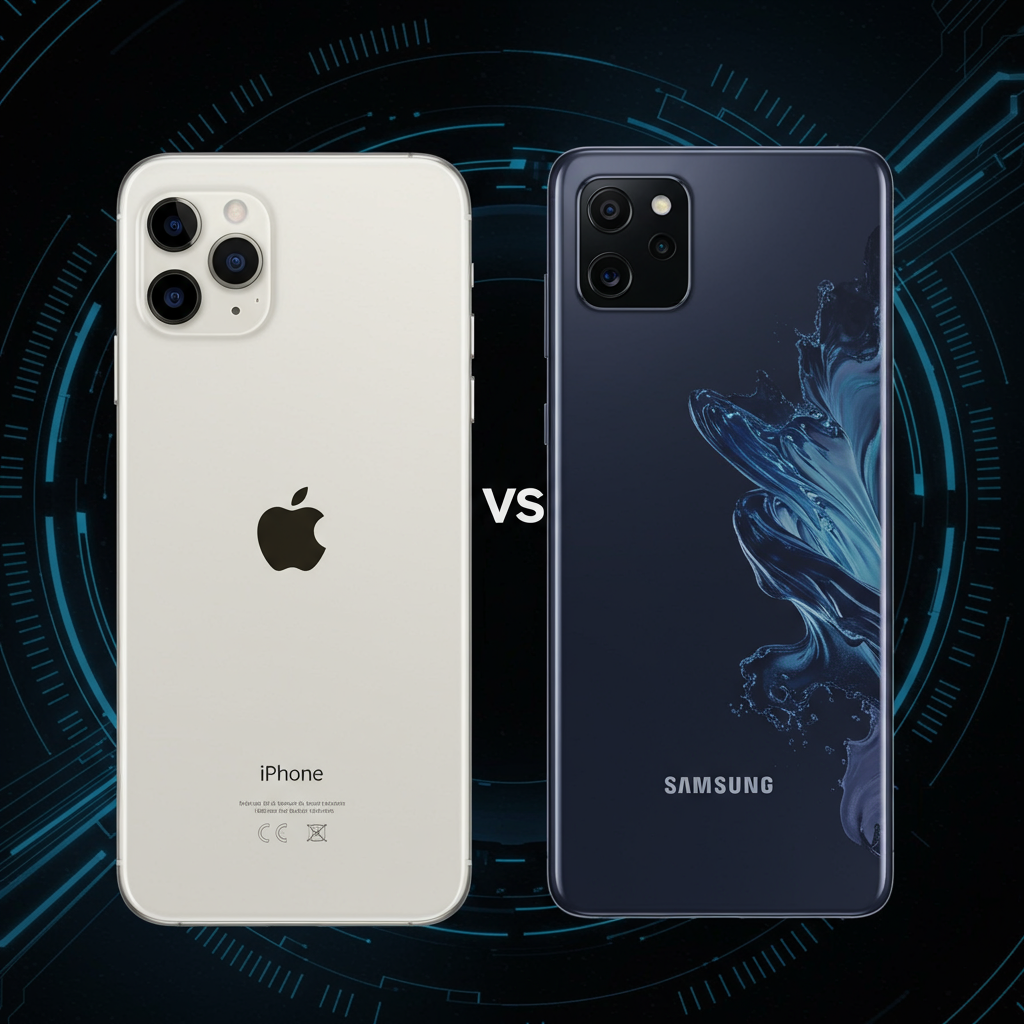Apple Inc. is reportedly making a monumental strategic shift in its wearable technology division. The tech giant has halted a major overhaul of its Vision Pro headset, reassigning significant resources to fast-track the development of Apple AI smart glasses. This aggressive pivot signals Apple’s intent to directly challenge competitors like Meta Platforms Inc. in what many industry experts believe is the next frontier of personal computing.
This decision marks a significant internal reprioritization, as Apple had been developing a more affordable and lighter Vision Pro variant, internally code-named N100, aiming for a 2027 release. However, just last week, staff from the N100 project were reportedly moved to accelerate work on the more urgent smart glasses initiative. This move underscores a growing consensus within the tech industry: AI-driven wearables are poised to become the next dominant hardware cycle, potentially succeeding the ubiquitous smartphone.
The Strategic Pivot: Why Apple Ditched the Vision Pro Revamp
The original Vision Pro, launched with a hefty $3,500 price tag, positioned Apple at the high end of the mixed-reality market. While a marvel of engineering, its high cost and somewhat bulky form factor limited widespread consumer adoption. This latest strategic maneuver suggests Apple may be implicitly acknowledging that its initial timing and approach for the Vision Pro line were perhaps miscalculated for the broader market. The company is now channeling its considerable research and development prowess toward devices that promise greater accessibility and seamless integration into daily life.
By shelving the N100 project, Apple is effectively pausing the iterative development of its current mixed-reality headset in favor of a different form factor entirely. This isn’t to say the Vision Pro is being abandoned; a modest refresh featuring a faster chip is still anticipated as early as the end of this year. However, the long-term focus has unequivocally shifted. Apple’s internal hopes now hinge on its upcoming Apple AI smart glasses to provide a more scalable and mass-market entry point into spatial computing.
The Dawn of AI-Powered Wearables: Apple’s Bold Bet
The tech world is currently buzzing with “AI euphoria,” a sentiment so powerful it’s driving significant market movements and investment, even amidst broader economic uncertainties. This fervent belief in artificial intelligence’s transformative potential is a key catalyst for Apple’s strategic reorientation. The company recognizes that the next generation of essential devices will be characterized by generative AI capabilities, always-on connectivity, and intuitive user interfaces.
Apple’s ambitious roadmap includes at least two distinct models of Apple AI smart glasses:
- Project N50 (iPhone-paired, no display): This initial model is designed to function primarily as an accessory to an iPhone, leveraging the phone’s processing power and display. It will lack its own integrated screen, focusing instead on audio interaction, advanced cameras, and voice controls. Apple reportedly aims to preview this model as early as 2025, with a target release in 2027.
- Advanced Model (with display): A more sophisticated version featuring its own integrated display is also in the works. Initially slated for a 2028 release, its development has now been significantly fast-tracked. This model is clearly intended to compete directly with existing and upcoming smart glasses that offer augmented reality overlays.
A cornerstone of Apple’s smart glasses strategy will be a heavily “rebuilt Siri.” This next-generation AI assistant is expected to power these new devices, alongside future speakers, displays, and cameras. Apple is banking on enhanced voice interaction and robust AI integration to deliver a truly intuitive and groundbreaking user experience.
The Fierce Competitive Landscape: Catching Up to Meta and Beyond
Apple’s decision to accelerate its smart glasses program comes amidst an intensely competitive and rapidly evolving landscape. Meta Platforms Inc. has established an early and significant lead in this burgeoning market. Through its successful partnership with Ray-Ban, Meta launched Ray-Ban Stories in 2021 and followed up with the more advanced Ray-Ban Meta in 2023. These devices have gained considerable traction, with Meta continually refreshing its non-display models, enhancing features like battery life and camera performance.
While Apple is known for its “slow-follower, then dominate” playbook, the fast-paced AI and wearable market demands agility. Meta has a formidable head start, entering the smart glasses market six years before Apple’s planned 2027 launch for its N50 model. The continuous growth in Meta’s smart glasses sales, though still modest, is a trend Apple is closely monitoring.
Beyond Meta, other tech titans are also making significant moves:
Google: Actively developing its own AI smart glasses, utilizing its Android XR operating system and the Gemini chatbot assistant. These are expected to arrive in 2024 or 2026, often through partnerships with eyewear companies like Warby Parker and Gentle Monster.
OpenAI: Even the generative AI pioneer is collaborating with former Apple design chief Jony Ive on an AI-powered wearable device, signaling the broad industry shift.
Despite the late start, some analysts argue that Apple is far from out of the race. They point to Apple’s “insurmountable ecosystem advantage” and the anticipated capabilities of its next-generation Siri as key differentiators. Apple’s integrated hardware and software environment could indeed provide a unique competitive edge, allowing for seamless interactions and enhanced security that rival platforms might struggle to replicate.
Challenges and Opportunities for Apple’s Wearable Future
Apple’s pivot presents both significant challenges and immense opportunities.
Challenges:
Catching Up: Overcoming Meta’s established lead and accelerated iteration cycle will require unprecedented speed and innovation from Apple.
Mass Market Appeal: Designing smart glasses that are both aesthetically appealing and genuinely useful for a broad consumer base remains a hurdle. Previous attempts by other companies have often struggled with user acceptance.
Privacy Concerns: Integrating always-on cameras and microphones in a wearable device will inevitably raise privacy issues that Apple must meticulously address.
Siri’s Evolution: A “rebuilt Siri” needs to deliver a vastly improved experience to become the seamless AI assistant Apple envisions for these devices.
Opportunities:
Brand Power: Apple’s brand loyalty and premium market positioning could allow it to quickly gain market share if its products deliver on their promise.
Ecosystem Integration: Deep integration with the iPhone, Apple Watch, and other Apple services offers a compelling user experience that competitors may find difficult to match.
AI Leadership: By focusing on cutting-edge AI, Apple has the chance to redefine what a smart wearable can do, potentially setting new industry standards.
Market Growth: The AI wearable market is still nascent, offering vast potential for growth for a company with Apple’s resources and design expertise. The “AI-led euphoria” suggests a fertile ground for new, innovative products.
The strategic shift also solidifies the Vision Pro’s position as a high-end, niche product for enthusiasts and professionals, rather than a mass-market device. It might be “retconned” into a broader ‘Vision’ strategy that eventually encompasses “true” AR glasses, but for now, the focus is clearly on more discreet, AI-powered eyewear.
Frequently Asked Questions
Why is Apple shifting focus from Vision Pro to AI smart glasses?
Apple’s pivot is a strategic response to several factors. The initial Vision Pro, priced at $3,500, struggled to achieve widespread consumer adoption due to its cost and form factor, signaling a potential misstep in market timing. Simultaneously, the tech industry is increasingly recognizing AI-driven wearables as the next major hardware cycle after smartphones. By redirecting resources from a Vision Pro revamp (code-named N100) towards Apple AI smart glasses, the company aims to position itself competitively in this burgeoning market, which is experiencing significant “AI euphoria” and rapid innovation from rivals like Meta and Google.
What specific types of AI smart glasses is Apple developing, and when can we expect them?
Apple is reportedly working on at least two distinct models of AI smart glasses. The first, internally known as N50, is designed to pair with an iPhone and will not feature its own display, focusing on audio and voice interaction. This model is anticipated to be previewed as early as 2025, with a target release date in 2027. The second, more advanced version will include its own display and was originally slated for 2028, but its development has now been fast-tracked. Both projects will heavily rely on a “rebuilt Siri” and artificial intelligence for their core functionalities.
How will Apple’s AI smart glasses compete with current market leaders like Meta and Google?
Apple faces a challenge from Meta Platforms, which has an early lead with its Ray-Ban Meta smart glasses, and Google, which is also developing AI glasses. Apple plans to compete by leveraging its “insurmountable ecosystem advantage,” integrating the smart glasses seamlessly with its existing iPhones, Apple Watches, and other services. A crucial element will be a “rebuilt Siri” and advanced AI, aiming to provide a superior, intuitive, and secure user experience. While Meta has a head start, Apple’s brand power, design expertise, and deep software-hardware integration are expected to provide significant competitive differentiators.
Conclusion
Apple’s decision to prioritize Apple AI smart glasses over a Vision Pro revamp represents a significant inflection point in the company’s long-term product strategy. It’s a bold bet on a future where augmented reality and artificial intelligence are seamlessly integrated into our daily lives through discreet, wearable devices. While Meta and Google have established early leads, Apple’s formidable ecosystem, design prowess, and commitment to a truly intelligent Siri could yet enable it to redefine the market. As the race for the next computing platform intensifies, all eyes will be on Cupertino to see if this strategic pivot allows Apple to once again set the standard for personal technology.



